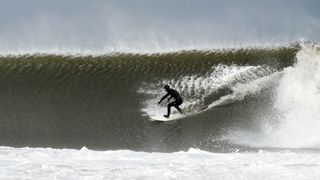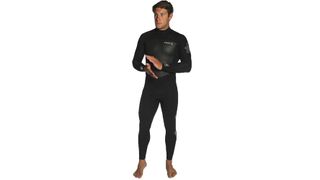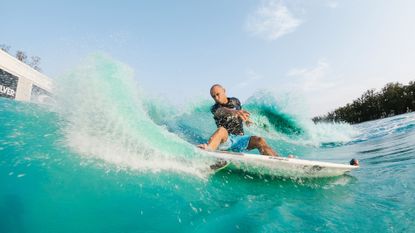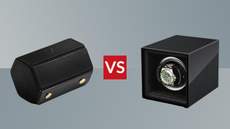Surfing waves can quickly turn from something you occasionally attempt on holiday to a full-blown, bone fide obsession. Once hooked, barely a day will go by when you’re not checking the surf forecast to plan the next trip to the coast, or researching a new surfboard you NEED to acquire. Relationships have been ended and jobs have been lost, but such trivial things matter little to the truly obsessed, as both mean more opportunity to surf!
Okay, we may be stretching the point a little, but riding waves is a ridiculous addictive pastime. If you’re new to the sport, our beginner’s guide to surfing will help you onto the right path and point you in the direction of all the gear you’ll need.
If you're brand new to the sport, head to our best surfboard for beginners, and best wetsuit guides to get yourself kitted out.
- Capture your exploits with one of the best action cameras
- Fancy something slower and simpler? Try one of the best inflatable paddle boards
- ... or the best paddle boards for beginners
Where to surf
The UK has hundreds of surf beaches along its 7723 miles of coastline, most of which are located in south west England and Wales, but they can also be found in the north east of England and northern Scotland.
Places like Devon and Cornwall tend to have the most favourable conditions with better weather, warmer seas (special thanks to the Gulf Stream) and they pick up the most Atlantic swell.
The ideal beginner’s surfing beaches are ones that gently slope to the sea and have plenty of space to get away from other water users. With smaller waves and more appealing temperatures, summer is the best time of year to give surfing a go, but on the flipside you will have more people in the water to contend with.

Your first waves
For your first surfing experience, it’s probably best to head out with a beachside surf school for a lesson. They will provide all the gear you need and will help you out with plenty of instruction. As well as a surf school or two, virtually all surf beaches will also have a shop from which you can rent wetsuits and boards. Hiring equipment is a great idea to begin with as you’ll be able to try out a range of gear to discover the kind of thing that suits you best and to ensure that surfing is for you – before you take the plunge and start buying your own stuff. As a rule, bigger boards are more stable and easier to catch waves on making them the best bet for beginners.
Our number one piece of advice for new surfers is to work on your pop-ups (the act of going from prone up onto your feet). Aim to do it in one fluid movement without using your knees. You don’t need waves or even a surfboard to work on your pop-ups, just lie on any flat surface and practice on there.
How to choose your first wetsuit
The first piece of surf equipment you’re likely to buy is your very own wetsuit. Hire suits are all well and good, but they’re normally well used and end up leaky and fairly whiffy as a result.
The vast majority of wetsuits come in one of three thicknesses – 3:2, 4:3 and 5:4. The numbers indicate the thickness (in millimetres) of the neoprene panels used to construct the wetsuit. 3:2 wetties are ideal for the summer months, 5:4s for the winter and 4:3s for everything in-between.
Whatever the time of year, in the chilly waters around the UK you’ll need a full-length wetsuit. Ignore the cheap wetties that appear in supermarkets during the summer and aim to spend as much money on your wetsuit as you can afford. Better quality wetsuits are more flexible and will help to keep your body at a comfortable temperature allowing you to have longer sessions scoring waves.
Best entry level summer wetsuit

The Legend uses C-Skins’ super-flexible Xtend 2 neoprene around the shoulders and sides of the chest for maximum freedom of movement when paddling, while the thicker and more durable Free Flex panels to the chest and lower body are well suited in these areas prone to more wear from your board.
The Thermo-Tech lining to the chest and back helps keep you warmer for longer and reinforced Dura Flex knee pads guard against abrasions from your board or anything else.
The Legend is packed with features for the price and is an excellent summer wetsuit that will keep you comfortable and warm in the water for hours on end. It’s also available in 4:3 and 5:4 versions for use in cooler conditions. A chest-zip version which guards against cold water flushes while allowing more flexibility is also available.
How to choose your first surfboard
Your first experiences of wave riding will likely be on a ‘foamie’. These are boards covered with a spongy EVA skin that is less likely to cause damage to you or others in a collision that a traditional hard fibreglass or epoxy exterior. While foamies are widely used by surf schools, we wouldn’t usually recommend buying one as you’ll be soon looking to move on to a better-quality board before very long.
A lighter, more manoeuvrable and more desirable alternative to foamies are soft-topped surfboards like the Softech Flash.
These boards have a smooth outer skin and a slightly cushioned layer beneath the deck and the rails (edges) to guard against collisions. The base of the board is usually hard so it planes more quickly over the surface of the water allowing you to travel faster. Being less likely to cause injury, soft-tops make great boards for kids. Adult surfers however, are likely to want to quickly progress to a ‘proper’ surfboard before very long.
There are a myriad of brands and options available for the L-plated surfer looking for their first hard board. Wider, flatter longboards or (slightly shorter) mini-mals are the easiest shapes to cut your surfing teeth on. If you want to eventually move to riding shortboards, learning the fundamentals of surfing on a bigger board first will accelerate your overall progress.
Construction-wise, companies such Bic (yes, the pen manufacturer) and NSP offer the cheapest and most basic models made with a polyethylene (plastic) outer layer. While these boards are virtually bombproof, they sit very high on the water surface so don’t plane all that well. They also lack the feel and responsiveness of better quality surfboards made with a polyester or epoxy finish.
Best entry level longboard

While you can find other entry level longboards at this price, few of the Cross Pintail’s rivals are made to this level of specification. The Pintail is built using a quality custom blank, 4 mm plywood stringer, 10oz fibreglass cloth on the deck (with 4oz cloth elsewhere) and finished with high-grade polyester resin.
The Pintail comes with a centre fin and two smaller sidebite fins, while five finboxes give you the flexibility to run the sidebites further forward for more speed and stability, or further back for tighter turns as your surfing progresses.
The board has plenty of volume under the shoulders for easy paddling and wave entry. The rocker is relaxed enough to enable you to easily catch your first waves, but still has enough lift for you to take on bigger stuff too. Whatever the conditions, this board is a serious wave magnet, but if you want something slightly shorter or longer, the Pintail is also available in 9’ and 9’6” lengths.
Other equipment to consider
If you’re surfing in the summer, you shouldn’t need neoprene gloves or a hood, but 3mm boots can be useful for early morning sessions when the air is still cold, or if you’ve got to negotiate rocks or pebble banks to enter the water. Like wetsuits, there are a ton of options available, but the Alder Enzo 3mm Split Toe Boots have lots of useful features and won’t break the bank.
Another useful item for use at any time of the year is a changing robe. They come in all shapes, sizes and finishes, but they essentially all perform the same function – covering you and your nether regions while changing into your wetsuit and keeping you warm when you get out. The Towel Dryrobe is an option that we’d recommend.
You may also wish to consider splashing out on an action camera to capture all your radical moves. Check out our round-up of the best ones available here.



